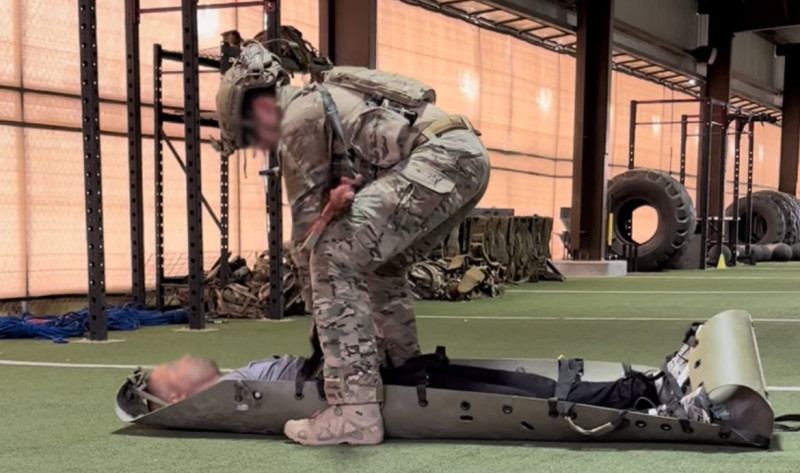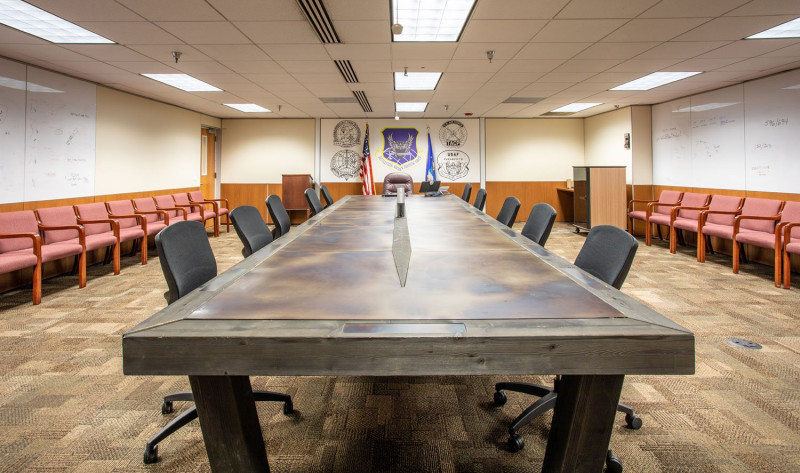What if your training center was also a coach?
Integrating space and technology to close the readiness gap faster
There’s a readiness gap between human performance training and actual performance downrange. Creating and maintaining mission-ready, lethal fighters is imperative. If there’s a disconnect between current human performance facilities and desired outcomes, it’s a matter of life and death.
Today, equipping human performance facilities with state-of-the-art technology that focuses on capturing data is increasingly par for the course. Measuring sleep patterns, nutritional habits, and tactical skills are giving commanders a clearer picture of individual fighters’ athletic abilities and areas of improvement. But when it comes to using that data to predict mission performance, the connection is often difficult to make. The real issue is not which technology or devices are used, but rather a lack of true integration between training methods and the warfighter's comprehensive performance. All-inclusive performance encompasses far more than physical strength, it includes every element of a soldier's being, including stress management and decision-making skills.
There is also much improvement needed within actual training technology that both prepares servicemen and women and protects them physically and mentally for the future. The challenge lies in utilizing human performance data, operator performance data, and real-time instructor feedback together to provide the student with actionable areas of improvement. Pass or fail feedback, or number of hours of REM sleep, for example, don’t mean anything if trainers don’t know why a student passed or failed, or if coaches can’t apply a percentage to an individual’s performance. The future of training is not just in more devices, but in an integrated approach that combines technology, training spaces, and methodologies seamlessly.
Human performance for warfighter optimization
Integrated training isn’t actually integrated until all of these components are working ideally. Improve Group’s patented CLIR methodology optimizes warfighter performance by providing a clear picture of a person that no mirror could ever reflect. CLIR utilizes a combination of connected sensors and other data generators (Connect) that are analyzed to clarify insights from these data streams (Learn). These insights are then applied to flexible and communicative structures that can adapt and improve training methods (Influence). The most important insights collected are then put in front of the people who need to see it most directly in the training environment to improve results (Reveal).
What if your entire conditioning space could train your fighters more effectively, provide real-time, actionable assessments, better integrate operational skills, and utilize more real-world simulation in less time for less money? In a CLIR-enabled performance facility, all phases of training are brought together in one holistic, multi-functional space that includes dynamic movement, strength & power training, PT, target practice, and decompression & recovery. Data collected during each of these phases is brought together and analyzed to provide instructors and warfighters with the insights they need to improve their outcomes in real-time.
Space as a coach
Today, ground combat simulations focus on one particular tactical skill. For example, shooting ranges measure an individual’s speed and accuracy. But what if they could tell you that your protein intake and quality of sleep were contributing to your shooting ability that day? What if the data it provided was more than pass vs. fail, but how an individual compared to their classmates, or what percentage they’ve improved? What if a shooting range could tell soldiers how to improve the grip and angle of their firearm? Improve Group helps design solutions that integrate technology with intelligent spaces to enable coaches to give better feedback to their students, ultimately creating a more lethal fighter.
Using virtual reality to recreate real-world scenarios is an incredibly flexible, economical way to prepare fighters better and faster. Simulations can be changed as needed while recording a fighter’s various areas of performance to provide real-time feedback. Current simulations are limited in scope, can’t easily be changed out, and require critical time and supervision for students to train. Additionally, students are limited in how often they can use these facilities. With virtual technology that provides immediate feedback, students can train whenever and how often they need to, without requiring a commander to be present.

A different perspective on integration
Physical and mental performance are all critical factors in creating the best fighters. Just as important are how people use space and technology in order to work optimally together. We see the bigger picture – the whole picture, from the tiniest yet crucial details, to the end goals of an entire base – and design customized solutions that integrate the physical space with tailored technology to meet the specific needs of your cadets and coaches.
Our Omega Construction Process begins with looking at the end goals of the space, and uses immersive design to create a space that aligns these goals. Through our construction process, we use the latest modular technology to implement the plan in less time using much fewer resources and labor than traditional construction. Once construction is over, we make sure each project can pivot to meet ever-changing needs and that you continue to maximize the value of your facility.
More Insights
Design a better ending.
Call 800.244.1452
"*" indicates required fields


